
Nourishing With Hygienic Food
Lorem ipsum dolor sit amet, consectetur adipiscing elit. Vivamus eget semper sem. Quisque sed convallis quam.


About us
We advise you to prevent disease with nutrition for healthy life.
Lorem ipsum dolor sit amet, consectetur adipiscing elit. Vivamus eget semper sem. Quisque sed convallis quam. Nulla lacinia massa non orci mollis lacinia.



Balance Body & Mind
Lorem ipsum dolor sit amet, consectetur adipiscing elit.

Fitness & Performance
Lorem ipsum dolor sit amet, consectetur adipiscing elit.
We advise you to prevent disease with nutrition
We have 20 years of nutrition and fitness health experience globaly, work with professionals
Lorem ipsum dolor sit amet, consectetur adipiscing elit. Vivamus eget semper sem. Quisque sed convallis quam. Nulla lacinia massa non orci mollis lacinia.

Personalized
Nutrition Plan

Personalized
Exercises Plan

Our Services
Provide Best Services


Balance Body & Mind
Lorem ipsum dolor sit amet, consectetur adipiscing elit. Vivamus eget semper sem.


Personalized Nutrition
Lorem ipsum dolor sit amet, consectetur adipiscing elit. Vivamus eget semper sem.


Fitness Performance
Lorem ipsum dolor sit amet, consectetur adipiscing elit. Vivamus eget semper sem.
Health Problems We Support
Lorem ipsum dolor sit amet, consectetur adipiscing elit. Diam id mi facilisi pretium. Tellus
diam condimentum nunc volutpat blandit. Nunc odio diam venenatis sit tincidunt.

Weight Loss
Lorem ipsum dolor sit amet, consectetur adipiscing elit. Nulla ut nisi varius, convallis justo placerat, gravida enim. Nulla et hendrerit ligula.

Autoimmune Conditions
Lorem ipsum dolor sit amet, consectetur adipiscing elit. Nulla ut nisi varius, convallis justo placerat, gravida enim. Nulla et hendrerit ligula.

Digestive Issues
Lorem ipsum dolor sit amet, consectetur adipiscing elit. Nulla ut nisi varius, convallis justo placerat, gravida enim. Nulla et hendrerit ligula.

Hormonal & Fertility Issues
Lorem ipsum dolor sit amet, consectetur adipiscing elit. Nulla ut nisi varius, convallis justo placerat, gravida enim. Nulla et hendrerit ligula.

Skin Conditions
Lorem ipsum dolor sit amet, consectetur adipiscing elit. Nulla ut nisi varius, convallis justo placerat, gravida enim. Nulla et hendrerit ligula.

Complex Conditions
Lorem ipsum dolor sit amet, consectetur adipiscing elit. Nulla ut nisi varius, convallis justo placerat, gravida enim. Nulla et hendrerit ligula.

Mental Health
Lorem ipsum dolor sit amet, consectetur adipiscing elit. Nulla ut nisi varius, convallis justo placerat, gravida enim. Nulla et hendrerit ligula.

Prevention/Optimisation
Lorem ipsum dolor sit amet, consectetur adipiscing elit. Nulla ut nisi varius, convallis justo placerat, gravida enim. Nulla et hendrerit ligula.

Sports Nutrition
Lorem ipsum dolor sit amet, consectetur adipiscing elit. Nulla ut nisi varius, convallis justo placerat, gravida enim. Nulla et hendrerit ligula.
Our Simple Process
Lorem ipsum dolor sit amet, consectetur adipiscing elit. Diam id mi facilisi pretium. Tellus
diam condimentum nunc volutpat blandit. Nunc odio diam venenatis sit tincidunt.

Book a consultation
Book a call with us to discuss your issues and how we may sport you

Start your programme
Book a call with us to discuss your issues and how we may sport you

Implement in your life
Follow your meal plan, supplement plan, and recipes. We will help you make lifestyle change.

Experience new health results
Enjoy an improved life quality and feel confident and knowledgable in your own health.

Nutritonist
Vegetarian Diet

Weight Loss
Pilates Exercises

Health
Pregnancy Diet

Fitness
Physical Activity
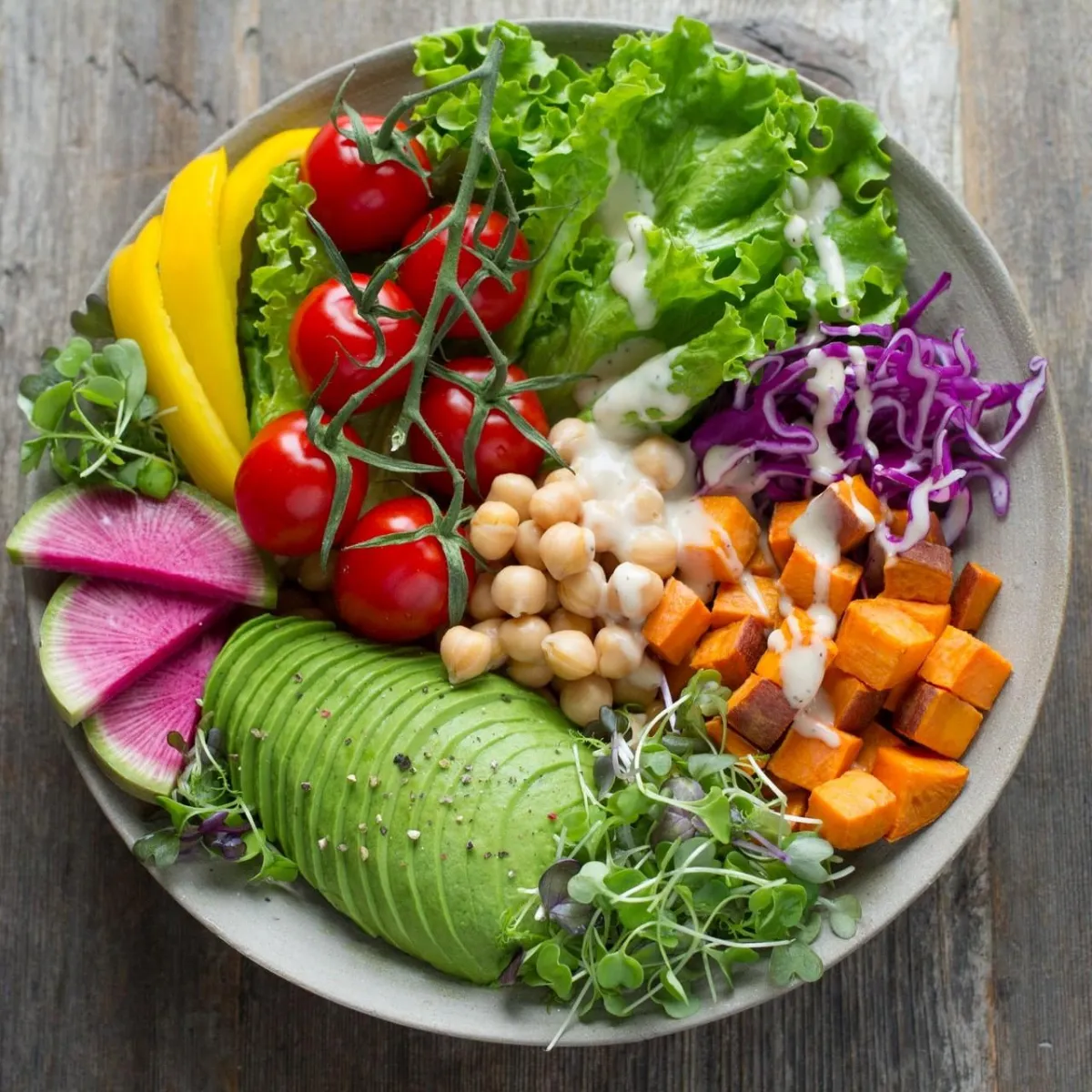
Healthy
Eat Healthy Food

Fitness
Yoga For Strength
Blogs & Articals
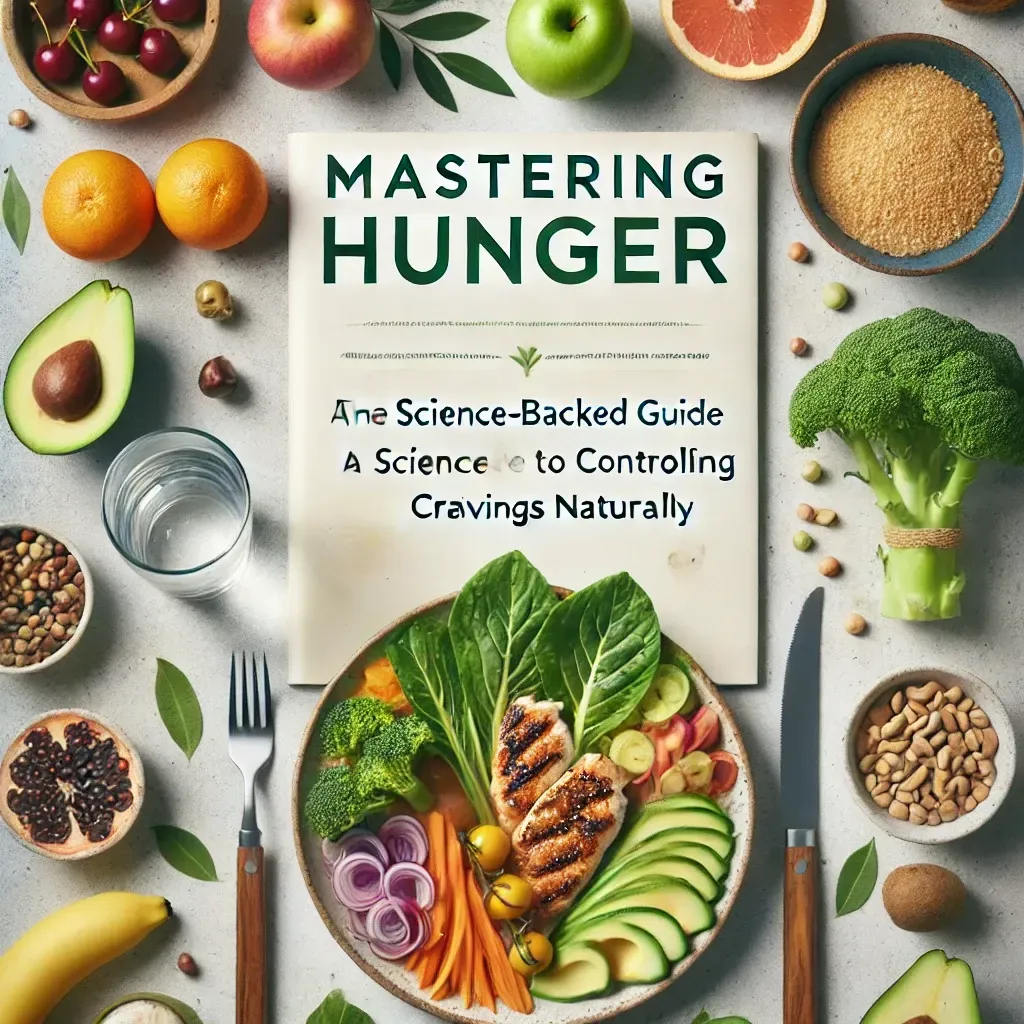
Mastering Hunger: A Science-Backed Guide to Controlling Cravings Naturally
Managing hunger and controlling food cravings can often feel like a constant battle, especially in a world where ultra-processed foods are engineered to keep us wanting more. But what if we could tap into our body’s natural processes to curb these cravings and regulate our appetite? By understanding the science behind hunger and how our body communicates satiety, we can make simple, effective changes to our eating habits.
In this article, we bring together the expertise of Dr. Casey Means and Dr. Zachary Knight—two leading voices in neuroscience and nutrition—who offer practical, science-backed strategies for mastering hunger and reducing food cravings. Drawing from cutting-edge research on satiety hormones like GLP-1, gut health, and the body’s feedback loops, they explain how making the right food choices can naturally regulate appetite and keep cravings at bay.
Whether it’s avoiding the pitfalls of ultra-processed foods, increasing protein intake, or learning the truth about fluid consumption during meals, this guide provides clear, actionable steps to help you regain control over your eating habits. By leveraging these natural physiological processes, you can make long-lasting changes that not only curb your cravings but also support better overall health.
Section 1: The Neuroscience of Hunger and Cravings
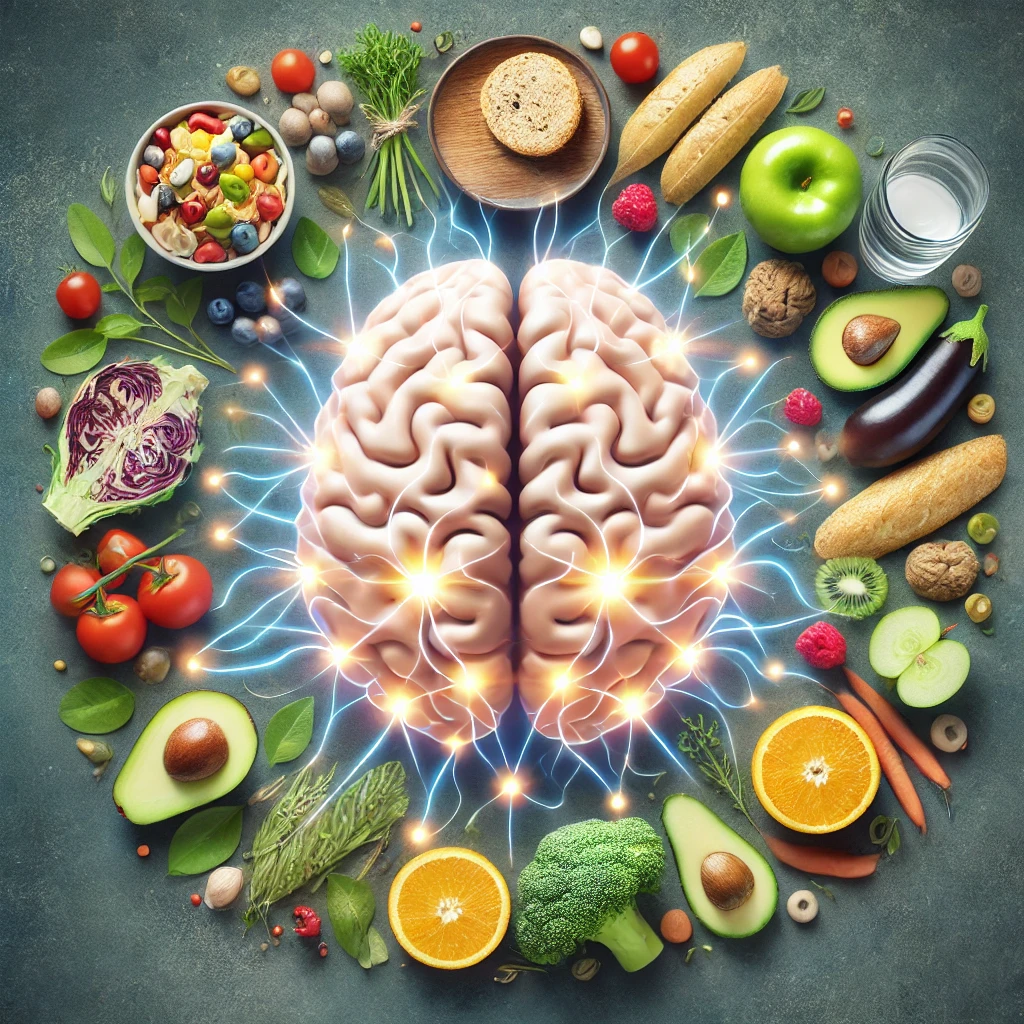
Hunger is not just a simple feeling—it’s a complex process driven by neural circuits and hormones that regulate when we feel hungry and when we feel full. Understanding these mechanisms can give us valuable insights into controlling food cravings and making smarter dietary choices.
How Hunger Works in the Brain
At the heart of hunger regulation are neural circuits like the AgRP neurons, located in the hypothalamus. These neurons become activated when the body senses a lack of nutrients, sending powerful signals that make us feel hungry. However, as Dr. Zachary Knight points out, while these neural pathways are fascinating, focusing on complex neuroscience can sometimes distract from the simple, effective changes we can make to control hunger in everyday life.
Rather than overcomplicating the science, Dr. Knight suggests starting with practical strategies like improving the quality of the foods we eat. By reducing ultra-processed foods and focusing on nutrient-dense options, we can quiet these hunger signals and naturally curb cravings. This approach simplifies the neuroscience of hunger into actionable steps, giving us more control over our eating habits.
The Role of Satiety Hormones: GLP-1 and L-Cells
While neural circuits play a significant role in hunger, hormones are equally crucial in signaling when we’re full. One of the key satiety hormones is GLP-1 (glucagon-like peptide-1), which is produced by L-cells in the gut. According to Dr. Casey Means, GLP-1 is a natural hormone that tells the brain when we’ve had enough to eat, reducing cravings and helping us feel satisfied.
The challenge is that many modern diets, filled with processed foods, fail to stimulate the production of GLP-1. However, when we consume whole foods—particularly those high in fiber and protein—L-cells in the gut are activated, leading to the release of GLP-1 and other hormones that suppress hunger. By choosing the right foods, we can work with our body’s natural processes to control hunger more effectively.
In the sections that follow, we’ll explore how you can implement these strategies—focusing on nutrient-rich foods, increasing protein intake, and understanding the body’s feedback loops for digestion—to manage hunger and reduce cravings naturally.
Section 2: Avoid Ultra-Processed Foods for Better Control
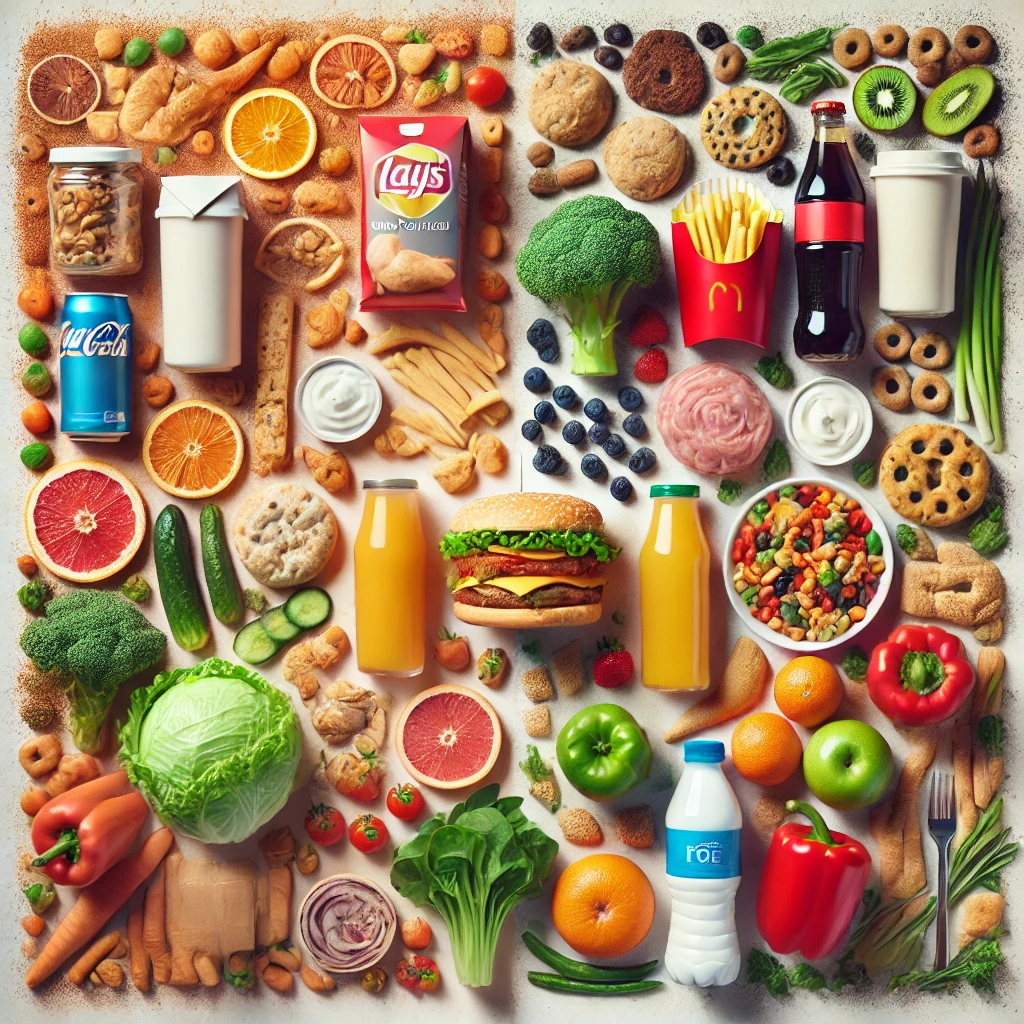
Why Ultra-Processed Foods Lead to Overeating
Ultra-processed foods are a major culprit when it comes to overeating and uncontrollable cravings. These foods are specifically engineered to be extremely palatable—loaded with combinations of sugar, salt, fat, and artificial additives that overwhelm the brain’s natural reward system. According to both Dr. Casey Means and Dr. Zachary Knight, this intense palatability causes a "bliss point" that makes it difficult to stop eating, even when you're no longer hungry.
Dr. Knight emphasizes that these highly processed foods hijack the brain’s natural hunger regulation systems by triggering intense cravings and overriding satiety signals. This leads to a vicious cycle of overeating, as the body struggles to recognize when it’s full. In contrast, whole foods work with the body’s natural hunger regulation, supporting hormones like GLP-1, which are responsible for signaling fullness and curbing appetite.
Dr. Casey Means explains that GLP-1, produced by L-cells in the gut, plays a critical role in suppressing cravings and promoting satiety. Unfortunately, ultra-processed foods do not effectively stimulate the production of this key hormone. Instead, they cause a rapid rise in blood sugar, followed by a crash, leading to more cravings and a cycle of overconsumption.
Whole Foods and Satiety
In contrast to ultra-processed foods, whole foods naturally stimulate hunger-regulating hormones and support long-term satiety. Dr. Casey Means emphasizes the importance of including more whole foods—such as fruits, vegetables, lean proteins, and whole grains—into your diet. These foods are nutrient-dense and fiber-rich, which means they not only provide essential vitamins and minerals but also help trigger the release of GLP-1 and other satiety hormones.
Whole foods like leafy greens, nuts, legumes, and lean meats are digested more slowly, promoting steady blood sugar levels and keeping hunger in check for longer periods. The fiber found in fruits and vegetables also aids in gut health, feeding the microbiome and supporting the production of short-chain fatty acids, which are crucial for the growth of L-cells and the production of GLP-1.
Here are some practical examples of whole foods that promote satiety and help control hunger:
Fruits: Apples, berries, oranges, and pears are rich in fiber and nutrients that support digestion and curb cravings.
Vegetables: Leafy greens like spinach, kale, and arugula stimulate satiety hormones and contain essential nutrients like thylakoids, which have been shown to enhance GLP-1 production.
Lean Proteins: Chicken, turkey, eggs, and fish are protein-rich options that provide amino acids like valine and glutamine, which directly stimulate GLP-1 secretion.
Whole Grains: Brown rice, quinoa, and oats provide slow-releasing carbohydrates that stabilize blood sugar and prevent overeating.
By making the switch to whole foods, you not only nourish your body with essential nutrients but also work with your natural hunger-regulating systems to better control cravings and reduce overeating. This shift away from ultra-processed foods can make a significant difference in managing your appetite and supporting long-term health.
Section 3: The Power of Protein for Hunger Control
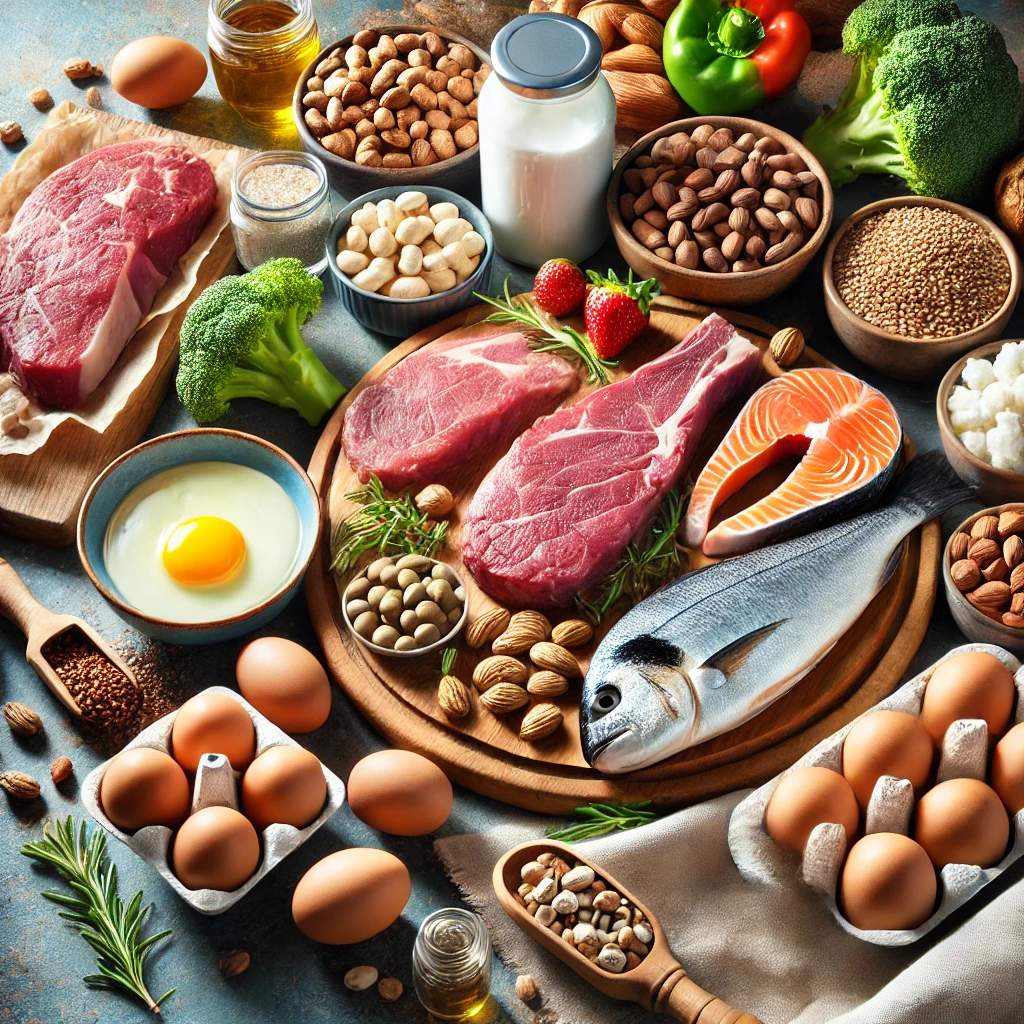
Protein’s Role in Reducing Cravings
Protein is one of the most powerful tools for managing hunger and reducing cravings. According to Dr. Zachary Knight, protein’s high satiating effect makes it essential for curbing overeating. When you consume protein, it helps keep you feeling full longer compared to carbohydrates or fats. This is because protein activates specific signals in the brain and gut that regulate hunger, making it a key nutrient in appetite control.
One of the most significant ways protein reduces cravings is through its ability to trigger the release of GLP-1, the hormone responsible for signaling satiety. As Dr. Casey Means explains, GLP-1 is produced by L-cells in the gut, and protein-rich foods are particularly effective in stimulating this hormone. In addition to GLP-1, protein also promotes the release of other hunger-regulating hormones such as PYY (Peptide YY) and CCK (Cholecystokinin), further enhancing the feeling of fullness and reducing the urge to snack or overeat.
By incorporating more protein into your diet, you can naturally support these hunger-regulating hormones, helping to reduce cravings and maintain a balanced appetite.
Protein-Rich Foods and Practical Tips
Including more protein in your diet doesn’t have to be complicated. There are many high-protein foods that can easily be integrated into your daily meals, providing the essential nutrients and amino acids needed to support satiety.
Here are some protein-rich foods to consider:
Lean Meats: Chicken, turkey, and lean cuts of beef are excellent sources of protein that provide amino acids like valine and glutamine, both of which, as noted by Dr. Casey Means, help stimulate GLP-1 production.
Fish: Salmon, tuna, and cod are rich in protein and also provide healthy omega-3 fatty acids that contribute to overall health.
Legumes: Beans, lentils, and chickpeas are plant-based protein options that are not only high in fiber but also support gut health, further enhancing satiety.
Eggs: Eggs are a versatile and cost-effective source of high-quality protein, perfect for breakfast or snacks.
Greek Yogurt: Packed with protein, Greek yogurt is a great addition to your diet and can be enjoyed as a snack or as part of a meal.
Practical Tips for Including Protein in Your Meals:
Breakfast: Start your day with a protein-rich breakfast such as scrambled eggs, Greek yogurt with nuts, or a protein shake. This helps set the tone for the day by curbing hunger and reducing mid-morning cravings.
Lunch and Dinner: Ensure each meal includes a substantial source of protein, whether it’s lean meat, fish, or a plant-based option like beans or tofu. Combine it with fiber-rich vegetables to maximize satiety.
Snacks: Choose high-protein snacks like hard-boiled eggs, nuts, or cottage cheese to keep hunger at bay between meals.
Incorporating protein into your meals will not only help with hunger control but also ensure that you are fueling your body with the amino acids needed for optimal health. The combination of protein and its ability to stimulate satiety hormones like GLP-1 can be a game-changer in reducing cravings and maintaining long-term appetite control.
Section 4: Debunking the Fluid Consumption Myth
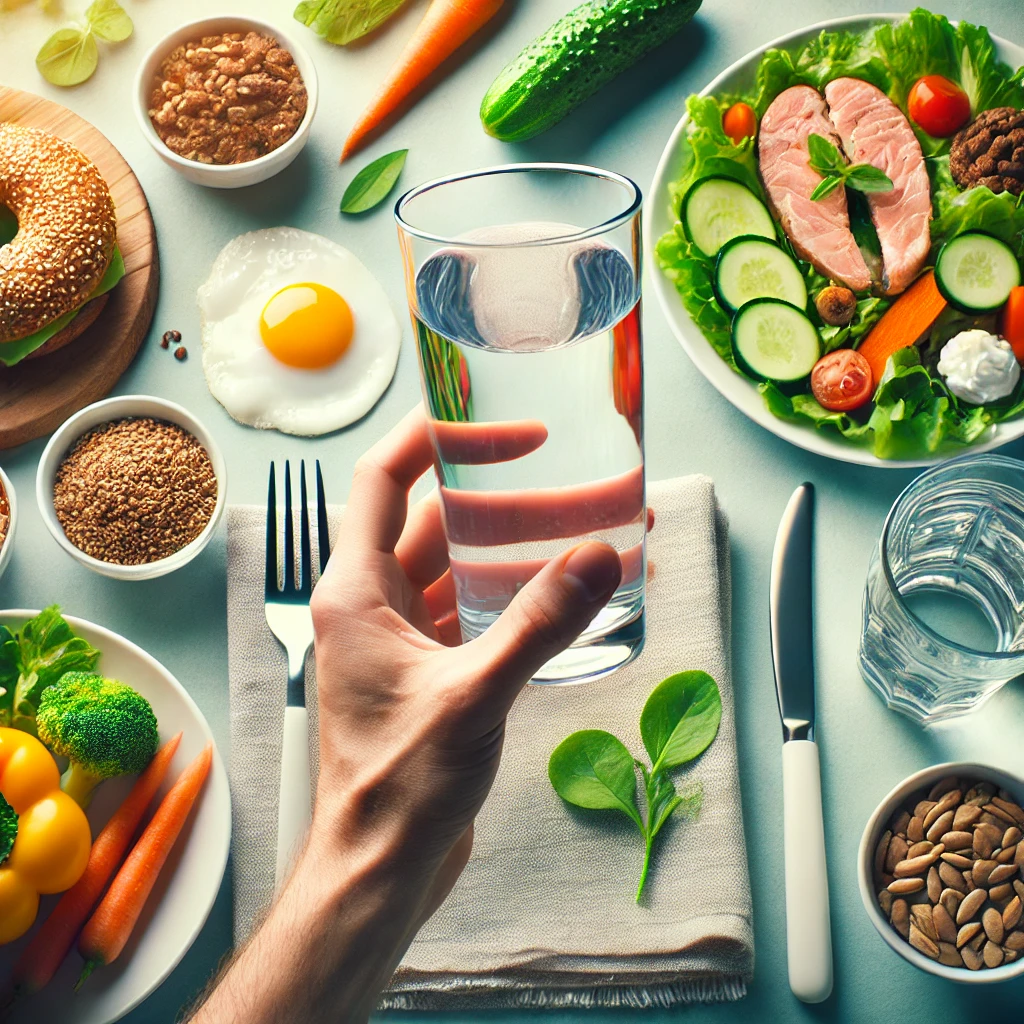
Does Drinking Water During Meals Affect Digestion?
A common myth about eating habits is that drinking water during meals can dilute digestive enzymes, interfering with digestion. However, Dr. Andrew Huberman and other experts debunk this misconception, explaining that water has no negative impact on the body’s ability to digest food. In fact, staying properly hydrated during meals can play a crucial role in regulating hunger and supporting overall digestion.
Drinking water during meals does not dilute the enzymes needed for digestion. Instead, water helps the body efficiently process food by ensuring proper hydration of the digestive tract. Hydration aids in breaking down food and supports the absorption of nutrients. More importantly, staying hydrated can prevent a common issue: confusing thirst with hunger. Often, when we feel the urge to snack or overeat, it may be a signal that our body is dehydrated, not hungry.
By drinking water consistently throughout the day, particularly before and during meals, you can better manage hunger signals and reduce the chances of overeating.
Practical Hydration Strategies
Hydration is a simple yet powerful tool in appetite control. Here are some practical strategies to ensure you stay hydrated and support your digestive health:
Drink Water Before Meals: Drinking a glass of water before each meal helps prepare the digestive system and enhances the feeling of fullness, making you less likely to overeat. This strategy also helps prevent mistaking thirst for hunger, a common issue that can lead to unnecessary snacking.
Stay Hydrated Throughout the Day: Aim to drink at least 8 glasses of water per day to maintain hydration. This ensures that your body is functioning optimally and supports healthy digestion. You can also set reminders or carry a reusable water bottle with you to make it easier to stay on track with your hydration goals.
Incorporate Hydration into Meals: While drinking water before meals is helpful, it’s also beneficial to sip water during your meal to aid the digestive process and promote satiety. Choose water or other low-calorie beverages like herbal teas to complement your meals.
Staying hydrated is a simple and effective way to regulate hunger and support digestion, and by debunking the myth that water interferes with digestion, you can confidently use this tool to your advantage. Proper hydration helps you maintain better control over your appetite and contributes to overall well-being.
Section 5: Understanding Gastric Emptying and Its Role in Satiety
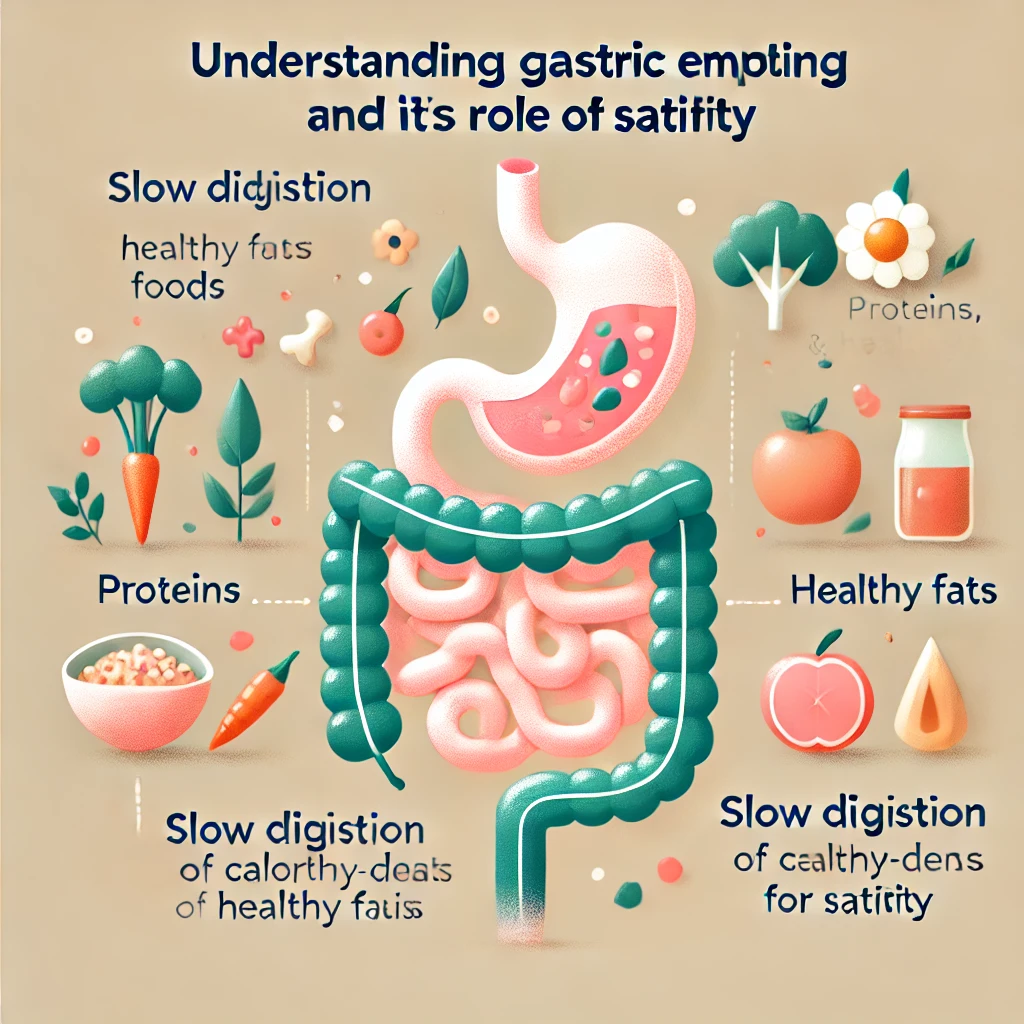
The Body’s Natural Digestive Regulation
One of the key factors in managing hunger and satiety is understanding how the body naturally regulates digestion through gastric emptying. As explained by Dr. Casey Means, the rate at which food leaves the stomach and enters the intestines is primarily influenced by the calorie content of the food you consume. This process, known as gastric emptying, plays a significant role in how full or hungry you feel after eating.
Calorie-dense foods, such as those high in fats and proteins, take longer to digest and leave the stomach at a slower rate. This delayed gastric emptying creates a prolonged feeling of fullness, which helps reduce the urge to snack or overeat shortly after a meal. In contrast, low-calorie fluids like water or herbal teas pass through the stomach more quickly, which is why they don’t contribute as much to satiety but are essential for hydration and supporting digestion.
This natural digestive regulation process acts as a feedback loop, where the body senses the calorie load of a meal and adjusts how quickly it is processed. This helps maintain a balance between energy intake and hunger signals, making calorie-dense, nutrient-rich meals more effective at controlling hunger over extended periods.
Practical Tips for Regulating Digestion
To support healthy digestion and maintain satiety, you can make strategic choices that promote balanced gastric emptying and reduce cravings. Here are a few practical tips:
Incorporate Low-Calorie Drinks with Meals: While calorie-dense foods contribute to prolonged satiety, consuming water or low-calorie drinks like herbal teas during meals can aid digestion without disrupting this balance. Sipping water throughout your meal ensures that your digestive system remains hydrated, which is essential for smooth gastric emptying and nutrient absorption.
Eat Balanced Meals with Proper Macronutrients: Balanced meals that include a healthy mix of proteins, fats, and carbohydrates help regulate digestion and control hunger. Proteins and fats, in particular, slow down gastric emptying, helping you feel full longer. For example, a meal that combines lean protein, healthy fats (like avocado or olive oil), and fiber-rich carbohydrates (such as whole grains or vegetables) provides sustained energy and satiety.
Choose Fiber-Rich Foods: Foods high in fiber, like fruits, vegetables, and whole grains, slow down digestion and help regulate blood sugar, further supporting the body’s natural feedback loops for hunger. Fiber also feeds beneficial gut bacteria, leading to the production of short-chain fatty acids that enhance the body’s ability to regulate hunger and maintain satiety.
By understanding how gastric emptying works and making mindful choices with your food and drink intake, you can support your body’s natural processes to control hunger and promote long-term satiety. Balanced meals with proper macronutrients and staying hydrated can help you feel satisfied and reduce the likelihood of overeating or succumbing to cravings.
Section 6: Boost Satiety Hormones Naturally Through Food Choices
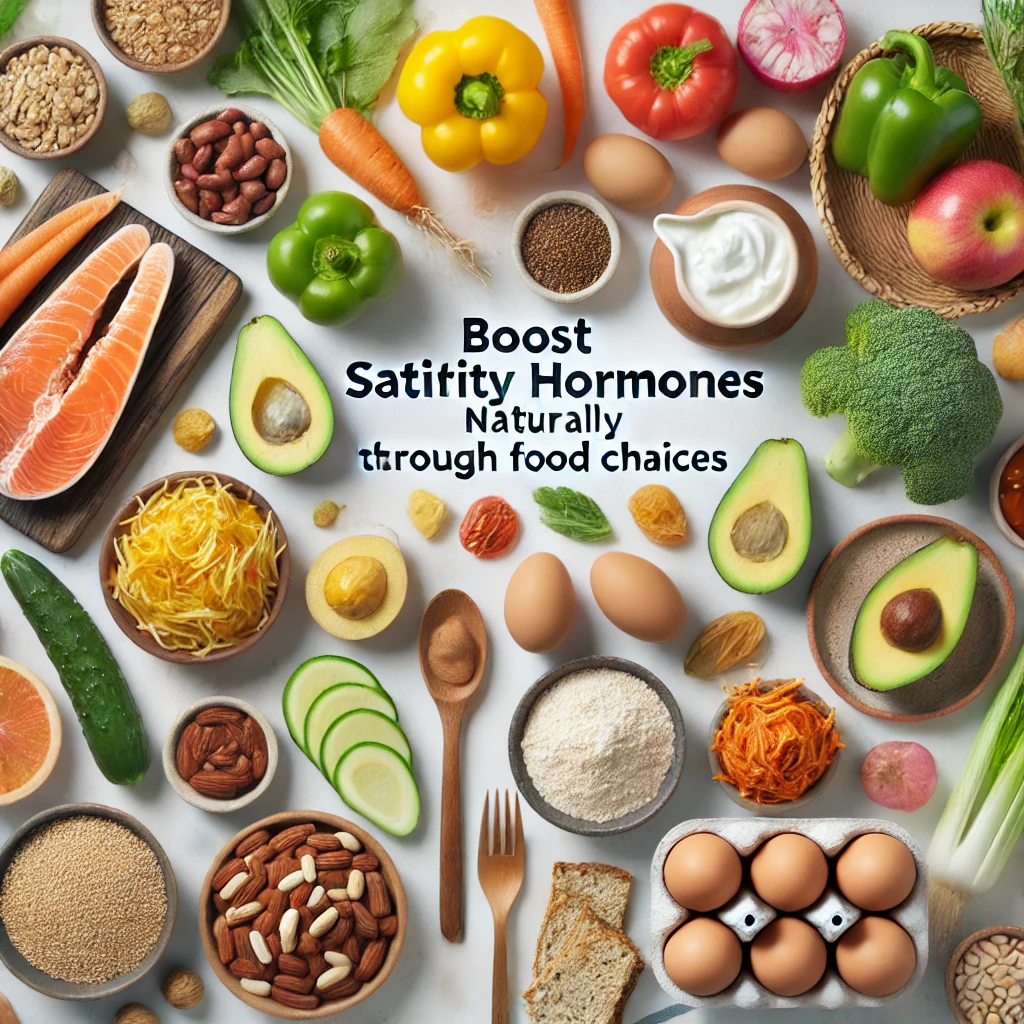
Foods That Stimulate GLP-1 Production
Boosting the body's natural production of GLP-1, a powerful satiety hormone, is a key strategy for controlling hunger and cravings. According to Dr. Casey Means, certain foods can naturally stimulate the production of GLP-1, making it easier to regulate appetite without relying on external medications. High-fiber foods, fermented foods, and polyphenol-rich fruits and vegetables are particularly effective at enhancing GLP-1 levels.
High-Fiber Foods: Fiber is essential for gut health and plays a critical role in the production of GLP-1. When fiber is fermented in the gut, it leads to the creation of short-chain fatty acids, which stimulate the growth of L-cells—the cells responsible for producing GLP-1. Foods like oats, beans, whole grains, and vegetables provide the fiber needed to naturally boost GLP-1 levels.
Fermented Foods: Fermented foods like sauerkraut, kimchi, and kefir also promote GLP-1 production by supporting the gut microbiome. These foods contain beneficial bacteria that help ferment fiber in the gut, further aiding the release of GLP-1. Including a serving of fermented foods in your diet daily can improve gut health and enhance hunger regulation.
Polyphenol-Rich Fruits and Vegetables: Polyphenols are antioxidants found in colorful fruits and vegetables, and they play a significant role in gut health and hormone production. Foods like berries, dark leafy greens, and brightly colored vegetables support GLP-1 secretion and overall digestive health.
Additionally, Dr. Means highlights a specific nutrient called thylakoids, found in spinach, that has been proven to increase GLP-1 secretion. Research shows that consuming around 100 grams of spinach daily (roughly 3.5 ounces) can significantly increase GLP-1 levels. The thylakoids in spinach inhibit the breakdown of fats in the gut, promoting longer-lasting satiety and making spinach a simple, effective addition to your meals for hunger control.
Inhibit DPP IV for Prolonged Satiety
Another critical factor in controlling hunger is slowing the breakdown of GLP-1, which is naturally degraded by an enzyme called DPP IV. As explained by Dr. Casey Means, by inhibiting this enzyme, you can prolong the effects of GLP-1, allowing the satiety signals to last longer, effectively reducing the frequency and intensity of cravings.
Certain foods have been shown to naturally inhibit DPP IV, extending the effects of GLP-1 and helping you stay full longer. Incorporating these foods into your diet can enhance your body's ability to control hunger:
Black Beans: Rich in fiber and protein, black beans are an excellent source of nutrients that both boost GLP-1 production and inhibit DPP IV, making them a great choice for maintaining long-term satiety.
Oregano and Rosemary: These herbs contain compounds that help slow the breakdown of GLP-1, providing a natural way to inhibit DPP IV. Adding fresh or dried oregano and rosemary to your meals can extend the effects of your body’s satiety hormones.
Berries: Berries such as cranberries, blueberries, and raspberries are high in polyphenols and other compounds that inhibit DPP IV. These fruits can easily be incorporated into breakfasts, snacks, or smoothies to help prolong the hunger-suppressing effects of GLP-1.
By making small changes to your diet—such as increasing your intake of high-fiber foods, incorporating fermented foods, and adding thylakoid-rich spinach—you can naturally stimulate the production of GLP-1. Pairing these foods with others that inhibit DPP IV, like black beans and berries, helps prolong satiety, making it easier to manage hunger and maintain a balanced appetite throughout the day.
Section 7: Balancing Nutrient Intake for Long-Lasting Satiety
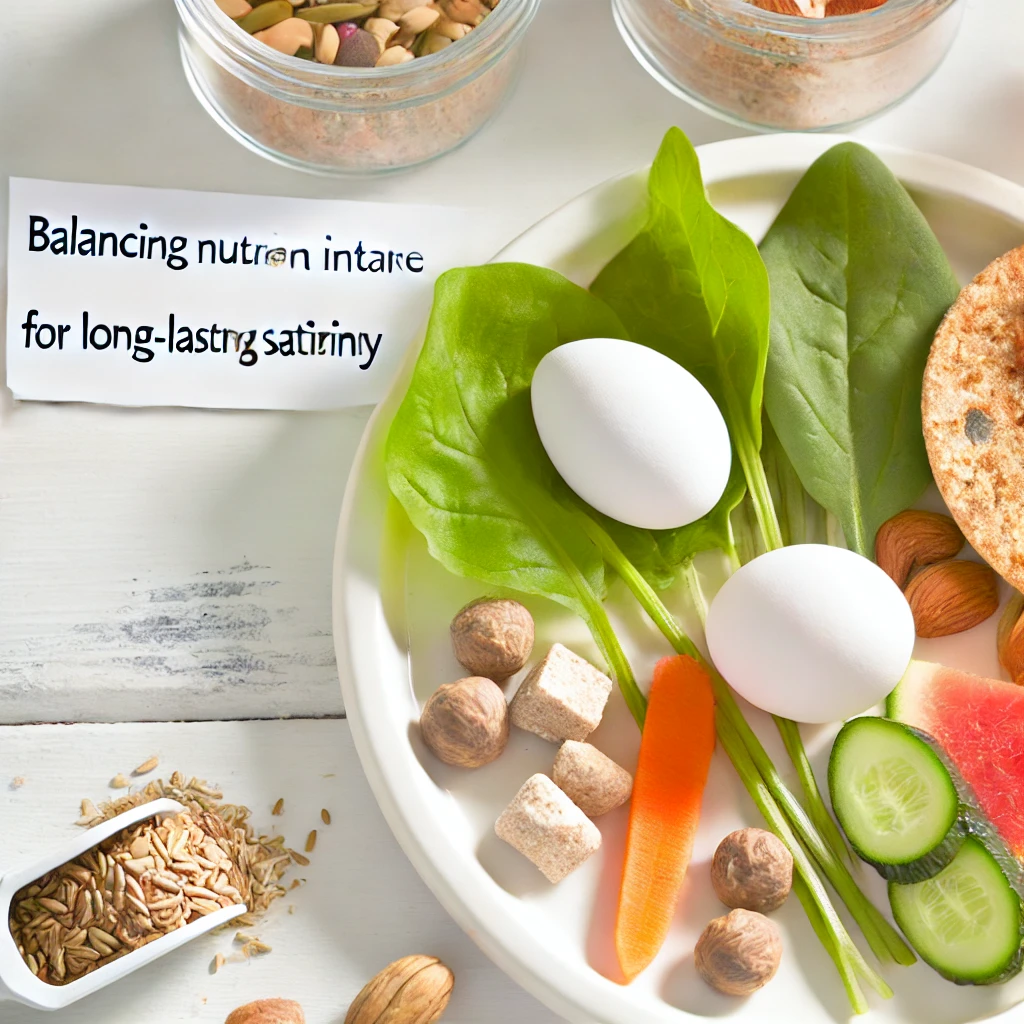
Support the Body’s Natural Feedback Systems
Hunger regulation is not just about what we eat, but how our body’s internal feedback systems—particularly the communication between the gut, intestines, and brain—work to maintain balance. Both Dr. Casey Means and Dr. Zachary Knight emphasize the importance of these natural feedback loops in signaling when we’re hungry or full. These signals are largely governed by the hormones and neural pathways that respond to the nutrients in our food, particularly the macronutrients: proteins, fats, and carbohydrates.
The gut and intestines send signals to the brain through hormones like GLP-1, PYY, and CCK, which are released in response to nutrient-dense meals. These hormones slow down digestion, helping the body feel full for longer periods. To support these feedback systems, it’s essential to provide the body with a balanced diet that includes adequate amounts of proteins, fats, and carbohydrates. Each macronutrient plays a different role in regulating hunger and promoting satiety:
Proteins: Stimulate satiety hormones and require more energy to digest, helping you feel fuller for longer.
Fats: Slow down gastric emptying, leading to prolonged feelings of fullness.
Carbohydrates: Provide a steady source of energy and fiber, which supports digestive health and satiety.
By balancing these macronutrients in your diet, you can enhance your body’s natural ability to regulate hunger and reduce cravings.
How to Plan Balanced Meals for Hunger Control
Planning meals that are rich in protein, fiber, and healthy fats can help you maintain satiety throughout the day and prevent the urge to overeat. Here are some practical tips for creating balanced meals that align with your body’s hormonal and digestive responses:
Prioritize Protein in Every Meal:
Ensure that each meal includes a high-quality source of protein such as lean meats (chicken, turkey), fish, eggs, tofu, or legumes.
Example: A lunch of grilled chicken breast with a side of quinoa and sautéed spinach provides ample protein and fiber to stimulate satiety hormones like GLP-1 and PYY.
Incorporate Healthy Fats:
Include healthy fats like avocado, nuts, seeds, olive oil, or fatty fish (like salmon) to slow digestion and support long-lasting fullness.
Example: A breakfast of avocado toast with a poached egg on whole grain bread, drizzled with olive oil, combines fiber, protein, and healthy fats for sustained energy and satiety.
Add Fiber-Rich Foods:
Fiber is crucial for gut health and for slowing down digestion, which helps manage hunger. Include fiber-rich foods like leafy greens, whole grains, legumes, and fruits.
Example: A dinner of grilled salmon with roasted sweet potatoes and steamed broccoli provides fiber, protein, and omega-3 fatty acids to support gut health and hormonal balance.
Balance Carbohydrates:
Choose slow-digesting carbohydrates like whole grains (brown rice, quinoa), vegetables, and legumes to avoid blood sugar spikes and ensure steady energy levels.
Example: A bowl of quinoa with black beans, mixed greens, roasted vegetables, and a drizzle of olive oil balances fiber, protein, and carbs for a nourishing and filling meal.
Snack Smart:
When hunger strikes between meals, choose protein-rich or fiber-rich snacks like Greek yogurt, nuts, or a piece of fruit with almond butter. These options will keep you satisfied without triggering cravings.
Example: A small bowl of Greek yogurt with mixed berries and chia seeds provides a healthy snack packed with protein, fiber, and antioxidants.
By focusing on balanced meals that combine these macronutrients, you can naturally enhance your body’s ability to regulate hunger and minimize cravings. With the right meal planning strategies, you’ll support your body’s feedback loops, maintain stable energy levels, and feel full for longer periods, making it easier to stick to a healthy eating routine.
Conclusion: Mastering Hunger and Craving Control
Mastering hunger and craving control is not about extreme diets or restrictive eating, but rather about making simple, sustainable changes based on science. As we’ve explored, the key steps to achieving better hunger regulation and reducing cravings involve:
Reducing ultra-processed foods: These foods are designed to trigger overeating, whereas whole foods help naturally regulate appetite through satiety hormones.
Increasing protein intake: Protein not only keeps you fuller for longer but also triggers the release of hunger-regulating hormones like GLP-1.
Staying hydrated: Drinking water before and during meals supports digestion, enhances satiety, and prevents mistaking thirst for hunger.
Understanding gastric emptying: Eating balanced meals with proteins, fats, and fiber helps slow down digestion, promoting long-lasting fullness.
Using natural food strategies to boost satiety hormones: Foods like high-fiber vegetables, fermented foods, and polyphenol-rich fruits stimulate the production of GLP-1, while other foods help inhibit its breakdown, prolonging the feeling of satiety.
By incorporating these science-backed strategies into your daily routine, you can create a balanced and effective approach to hunger control that supports long-term success. These changes don’t need to be drastic—start small by gradually replacing processed foods with whole foods, increasing your protein intake, and staying mindful of your hydration.
With time and consistent effort, these habits will help you achieve better hunger control, reduce cravings, and improve your overall health. Remember, it’s a journey of gradual implementation, but the rewards of more stable energy, better appetite control, and greater well-being are well worth the effort.
Source
Dr. Zachary Knight: The Science of Hunger & Medications to Combat Obesity:
Dr. Casey Means: Transform Your Health by Improving Metabolism, Hormone & Blood Sugar Regulation:
Testimonial
Our Clients Love Us



John Doe
Lorem ipsum dolor sit amet, consectetur adipiscing elit, sed do eiusmod tempor incididunt ut labore et dolore magna aliqua. Ut enim ad minim veniam, quis nostrud exercitation ullamco laboris nisi ut aliquip ex ea commodo consequat.


Frequetly Asked Question
Your Title Here
Lorem ipsum dolor sit amet, consectetur adipisicing elit. Autem dolore, alias, numquam enim ab voluptate id quam harum ducimus cupiditate similique quisquam et deserunt, recusandae.

Your Title Here
Lorem ipsum dolor sit amet, consectetur adipisicing elit. Autem dolore, alias, numquam enim ab voluptate id quam harum ducimus cupiditate similique quisquam et deserunt, recusandae.

Your Title Here
Lorem ipsum dolor sit amet, consectetur adipisicing elit. Autem dolore, alias, numquam enim ab voluptate id quam harum ducimus cupiditate similique quisquam et deserunt, recusandae.

Get In Touch
Email: [email protected]
Address
Office: Lorem Ipsum, XX, 12345
Assistance Hours
Mon – Sat 9:00am – 8:00pm
Sunday – CLOSED
Phone Number:
xxx-xxx-xxxx
